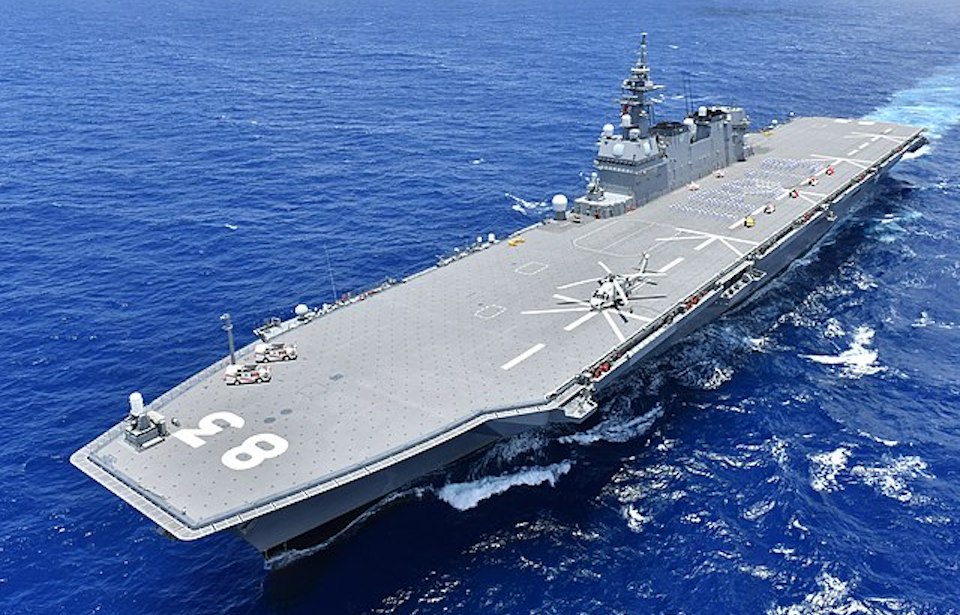Following a recent test with the US Marine Corps, the Japanese Navy have added a de facto aircraft carrier to its fleet, the first since the end of World War II. The move has raised eyebrows, given the country’s pacifist Constitution, which limits its military capabilities to those of defense.
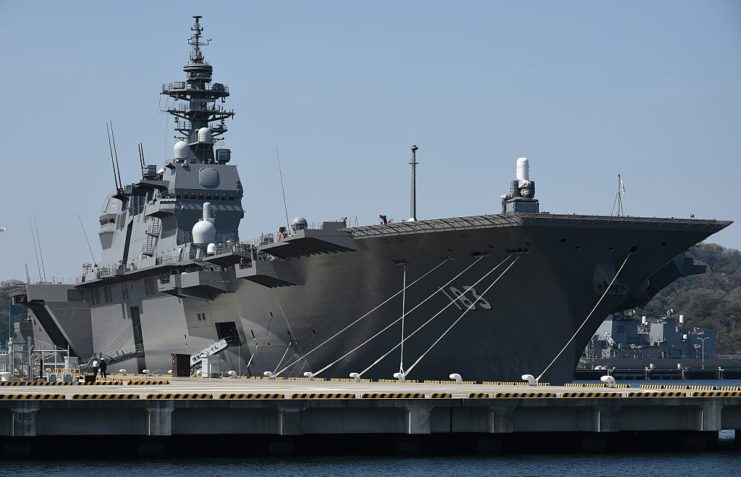
At the request of the Japanese Maritime Self-Defense Force, F-35B Lightning II fighter jets from Marine Fighter Attack Squadron 242 conducted a standard maneuver landing on the JS Izumo, a former flat-deck helicopter destroyer. While conducting the maneuver, the pilots converted the jump jet to hover mode while flying alongside the Izumo, before sliding sideways over the deck and landing.
The landing’s success marks the first time since WWII that Japan has had an aircraft carrier in its fleet, if in the de facto sense. It is also a notable event on the path toward establishing smaller carriers equipped with F-35Bs as the new capital ships of Asia.
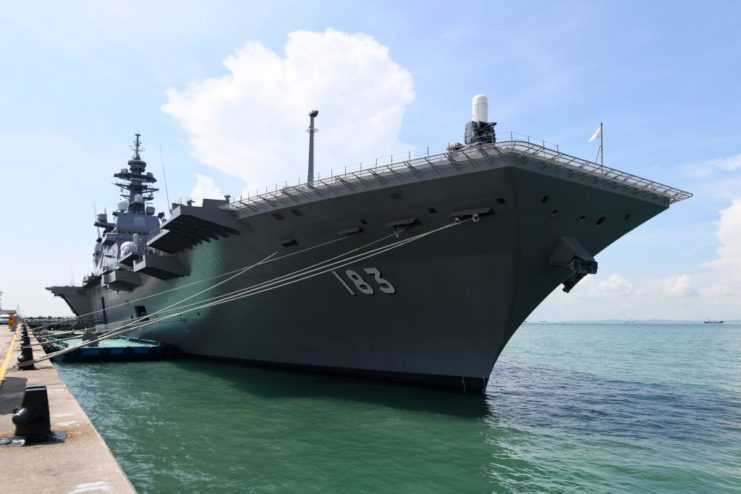
“This trial has proved that the JS Izumo has the capability to support takeoffs and landings of STOVL aircraft at sea, which will allow us to provide an additional option for air defense in the Pacific Ocean in the near future,” Japanese Navy Rear Admiral Shukaku Komuta, commander of Escort Flotilla One, said in a statement.
“We still have work to do until the day the JSDP can regularly employ STOVL aircraft at sea, but I am confident that the strong partnership and mutual trust between our two countries will result in this realization.”
The Japanese Navy commissioned the Izumo in 2015 and announced plans to refit it in late 2018. The project has cost around $30 million to date. It had long been an open secret that Japan’ militarist forces wished to turn the ship into a light aircraft carrier.
According to sources, the move to allow an aircraft carrier in the fleet was supported by the US, in an attempt to contain China‘s military development, and those within Japan‘s militarist forces, who wish to break free of the country’s pacifist Constitution, which it signed at the conclusion of WWII.
As stated by the Japan Times, the upgrades to the ship have left it unclear if or how it will remain the limits of the country’s “exclusively defense-oriented policy.”
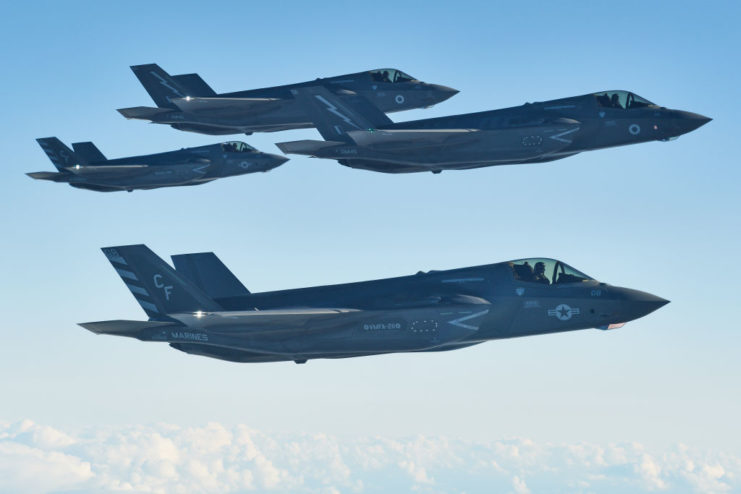
“Governments have argued that Japan has the right to maintain capabilities and use the ‘minimum necessary level of defense,'” Jeffrey Hornung, a scholar of Japan at Rand Corp, explained to Military.com. “Historically, anything that exceeds that is considered war potential, and therefore it violates the Constitution.”
Under the Constitution, the country’s naval forces are forced to rely on carrying helicopters for self-defense and avoid using the term “aircraft carrier.” According to Hornung, there are four things that fall into the category of violating Japan’s Constitution: long-range bombers, aircraft carriers, and intercontinental and intermediate-range ballistic missiles.
While experts warn the Izumo‘s ability to hold F-35 fighters will allow Japan to launch attacks far from home, it should be noted the vessel is rather small compared to China’s Liaoning carrier and the US Navy‘s Nimitz-class carriers.
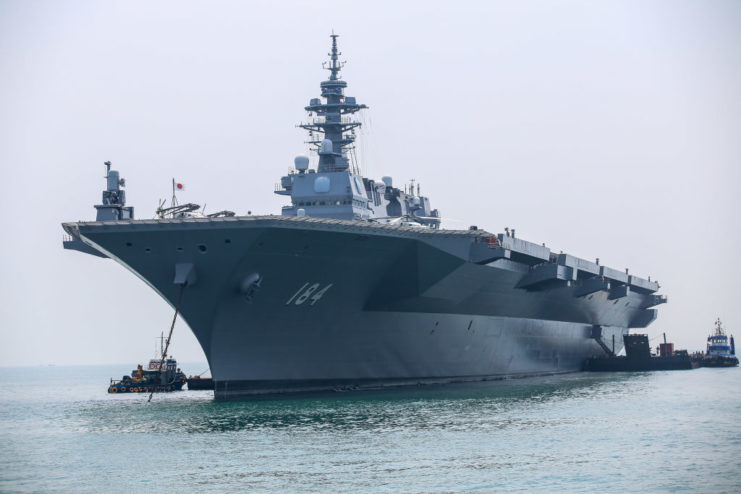
Further modifications are expected to be made to the Izumo. Additionally, its sister ship, the JS Kaga, is scheduled to receive similar upgrades in preparation for Japan’s acquisition of 42F-35Bs, which are scheduled to arrive within the next five years.
